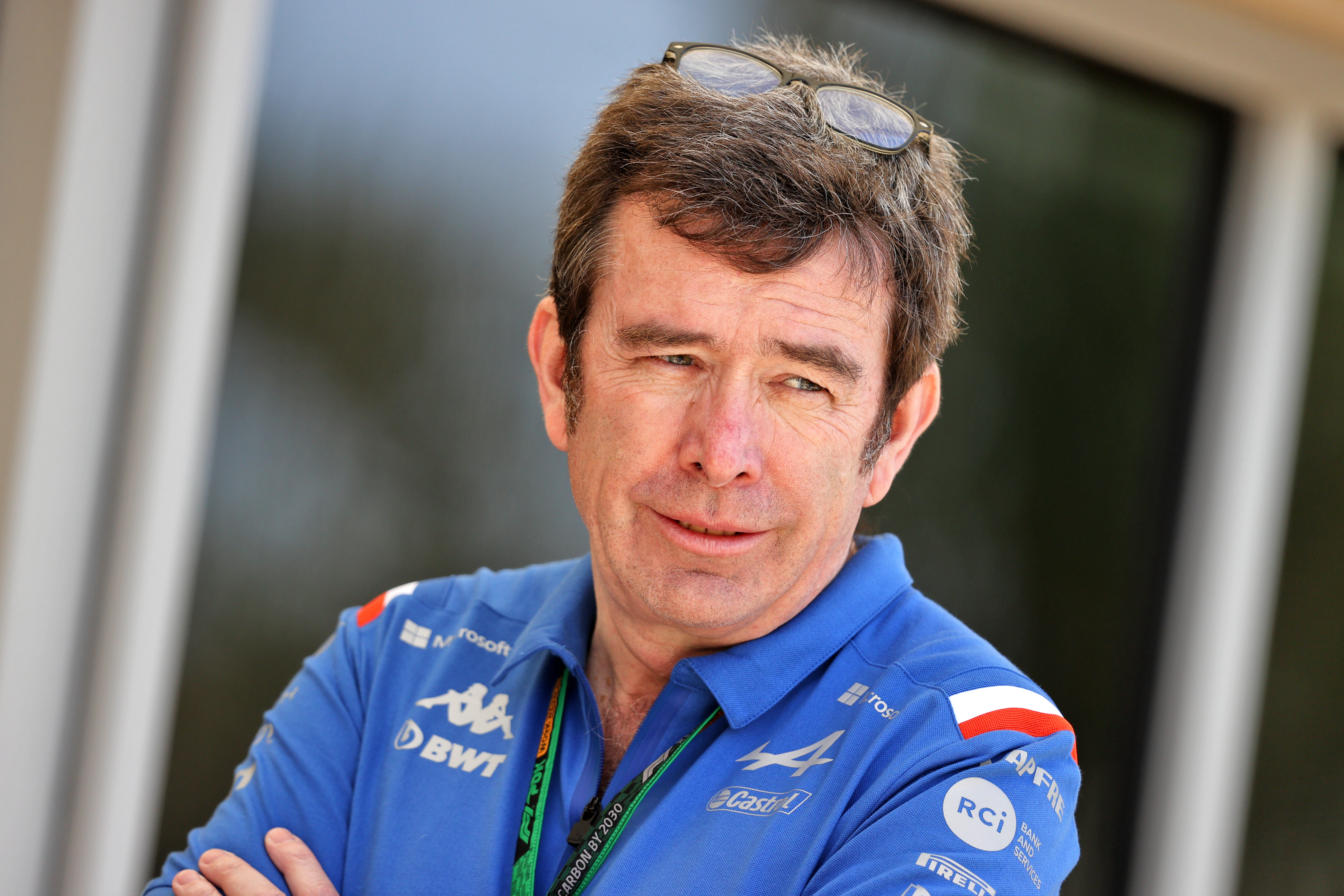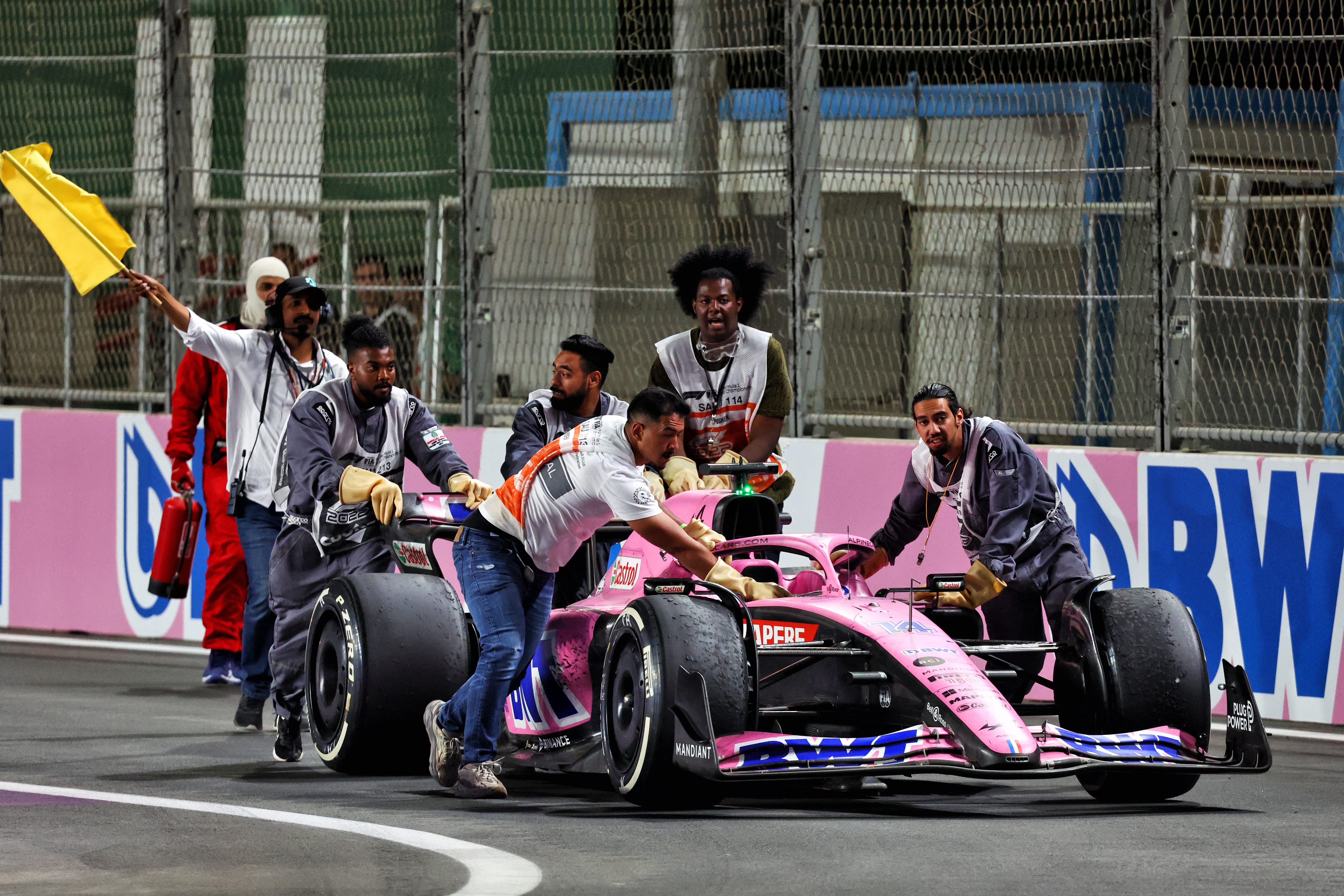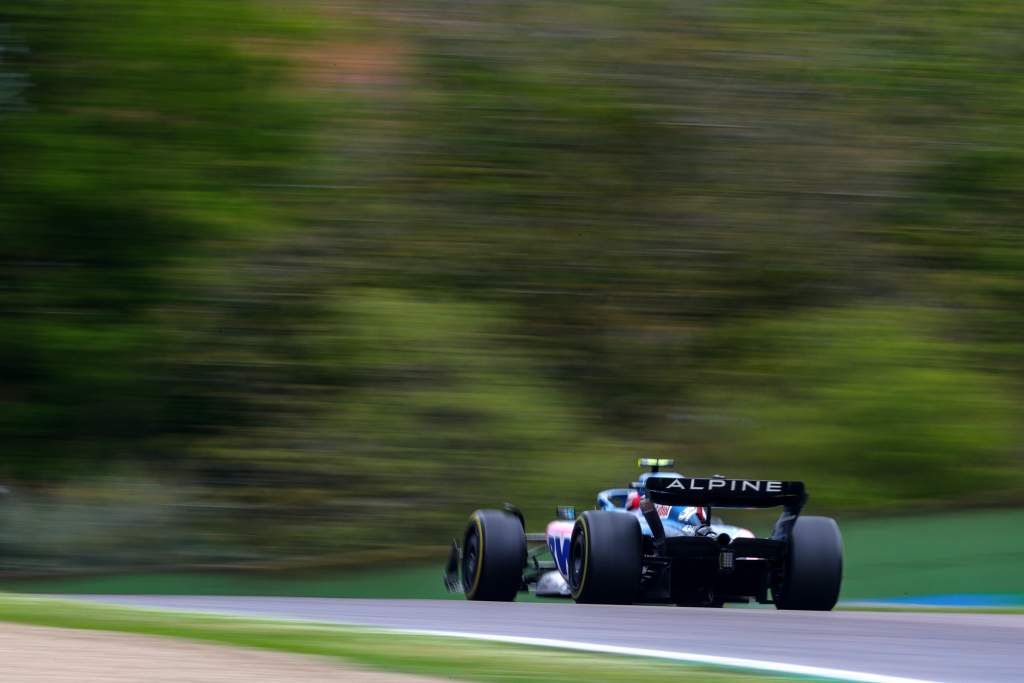Up Next

Renault is already conducting preliminary work on its 2026 Formula 1 power unit, with Alpine Racing executive director Bruno Famin saying the firm has “started exploring some topics”.
Although F1’s next-generation power unit will not race for another three-and-a-half years, the power unit homologation freeze with current designs was implemented to allow the engine manufacturers to work on the new designs.
The final homologation deadline for three elements of the frozen power unit – the MGU-K, energy store and control electronics – is not until September 1, but Renault introduced a complete new engine package at the start of the season so is now in a position to focus on 2026.
While the new power unit regulations have not yet been finalised, the majority of the technical detail is already known with the MGU-H removed and the intention to increase the MGU-K output from 120kW to 350kW (469bhp).
“We have started exploring some topics,” said Famin when asked about the status of 2026 work by The Race.
“The key points of the regulations are there, even if the new regulations aren’t finalised.
“Working with Viry, together with Enstone, we are already working on it for sure.”
Given the lengthy design lead times required for the power units, all of F1’s engine suppliers are conducting work on the new engines.
Red Bull team principal Christian Horner confirmed in April that a single-cylinder version of the 2026 engine being produced by his firm’s new Powertrains arm will run “imminently”.
Although there are details yet to be hammered out on the power unit rules, these primarily relate to the cost regulations and the allowances for activities such as dyno testing.
Famin also confirmed that Alpine is continuing to invest in its facilities to be equipped for the challenge of 2026 – including in terms of dyno equipment despite the planned limitation.

“You always need to invest,” said Famin. “It [the dyno time] is not the same volume but you have to adapt.
“That’s why we’re investing now because the key topics of the 2026 regulation are already known, even if we don’t know the number of dyno hours.
“We know the key points of the 2026 regulations and we’re adapting our facilities to be in line with these new technologies, new regulations.
“You also need to invest because there is always something new in the way of testing, engines, components – always something to learn.
“You need to optimise as the number of hours will be reduced, you have to optimise to change your way of testing. We’re working on that for sure.”
While 2026 will increasingly become the focus, there is still the need to work on the current specification of power units.

Although they are frozen, there is still provision to make changes to combat reliability problems and Renault is already taking advantage of that.
Fernando Alonso retired from the Saudi Arabian Grand Prix with an engine problem that was traced to a water pump failure that led to the engine overheating.
The specification was changed for the Emilia Romagna Grand Prix as a result, with Alpine putting the Jeddah problem down to the impacts sustained through porpoising.
Alpine required FIA approval to make the necessary changes, although Famin stressed that this has been a regular occurrence this year across the engine manufacturers.
Famin indicated this was primarily down to the porpoising problems that all teams have, to a greater or lesser extent, encountered.
“We know the manufacturers are sending reliability requests to the FIA, it’s public within the PU manufacturers,” said Famin. “We see that we are not the only ones having small reliability issues.
“When you are just starting a four-year freeze period, you have no other choice but going to the best possible engine knowing the FIA will not accept any modification in terms of performance, but they will accept some modifications for reliability issues.
“With the new generation of car with the new chassis, the new aero is generating is generating a different level of constraint in the car.
“The cars are very stiff, very low and we have some quite big impacts on the car. The problems we had [were] not from the ICE [internal combustion engine] itself, but from components around the ICE, unfortunately with impacts sometimes on the ICE.
“The ICE itself is very good, touch wood, we have no single issue on the ICE. But the fact that the car, all the cars, had more or less the same problem, the impacts are generating a new level of constraint. We are solving that.
“The problem we had in Jeddah with Fernando’s engine, we already asked for a modification from the FIA, it has been accepted and the modification is already in the engine.”
Alpine has made significant progress with its power unit this season, switching to the split turbo concept pioneered in F1 by Mercedes in 2014 and subsequently adopted by Honda.
It is reckoned to be giving away only in the region of 10bhp to the Ferrari power unit, with both Alonso and Esteban Ocon believing it puts them in a stronger position both in terms of pace and engine performance when it comes to battling other cars.






